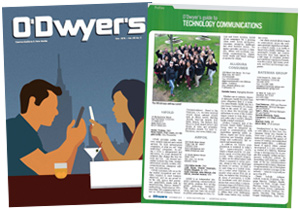|
|
If you look around the technology landscape, you’ll see that we’re in the middle of another tech boom — only it may not be exactly the boom you’re thinking of.
The amount of money pouring into mergers and acquisitions is on par with the late 1990s; indeed, the recent Dell/EMC deal is one of the largest to rock the technology industry in a long time. At the macro-economic level, low interest rates have made borrowing cheap and as a result there is plenty of money to fund mergers and acquisitions. It’s possible that companies are rushing to make the most of the interest rates before they go up, and this is why 2015 is turning into such a hot year.
|
|
M&A activity within the silicon segment of the tech industry has been especially hot. In the past year we’ve seen the consolidation of chipmakers — from Altera to Freescale to Broadcom.
A recent article by Ed Sperling at Semiconductor Engineering estimates that 2015 has seen twice the average number of deals and that the value of those deals is about ten times higher than normal. In silicon, the low interest rates are compounded by fairly low valuations across the board, making it easy for buyers to pick up some pretty good deals.
The advent of mergers and acquisitions in silicon isn’t a new thing though — we’ve been living with it since the 1980s. However, marketers should take note of three things that are happening in this latest wave of combinations that are shifting the landscape: a shifting center of gravity regarding multiple trends, an ecosystem that is changing, and innovation spotting.
Silicon and the IoT
We have all heard the term — perhaps we’re even a little sick of hearing about it. The IoT — the Internet of Things — has been on every technologist’s lips for the past three years or so. You’ve read about it in magazines and newspapers, heard about it on the news and if you’re involved in the Venture Capital community in any way, you’ve seen it come up in countless conversations.
The interesting thing about the IoT is that semiconductors are at the center of this trend. If nothing else, IoT as a term has served to create a nexus of several industries — from medical to automotive to construction — right at the doorstep of silicon companies.
So what does semiconductor consolidation mean for the IoT? It means that there are broader implications for industries beyond the semiconductor space. If acquisitions lead to a burst of new innovation, or conversely a slowdown in research and development, it could impact the innovation we see in autos, airplanes and even the garment industry.
Smart marketers in silicon and semiconductor companies should recognize this new web of connections — the benefits of these mergers need to be articulated in much broader terms than simply a combination of two companies that make certain types of chips or sensors.
A changing ecosystem
Sperling is also careful to point out in his article that consolidation runs counter to trends in the silicon industry over the past forty years. The industry traditionally deconsolidates. Recent M&A’s threaten to add three percent to market share of the ten biggest companies in the silicon space. Add to that the fact that recent M&A’s also put formerly disparate companies together: security and memory, SoC and Flash, EDA and IP. Suddenly the nature of who does what, and more importantly who buys what, has changed dramatically.
This creates an interesting challenge for marketers — the challenge of resetting the playing field and repositioning brands that have consistently done the same thing for the past twenty to forty years. Part and parcel to this is building and reshaping alliances, and in the process crafting the vision for the industry’s future. This process becomes much more interesting given the first point — that you’re repositioning in a world where the silicon industry isn’t just an obscure technical offshoot of the tech industry; rather it’s the center of industries from automotive to healthcare.
What does this mean for products and technologies? It means they have life and a voice beyond nodes, gHz, energy efficiency stats and fabrication details. It means semiconductor companies have a huge opportunity to reimagine themselves at the intersection of technology and humanity. It’s time to play a much more sophisticated game of ball — but time is not on the side of these marketers. They must establish their new ecosystem and market position quickly.
Communications professionals often get caught up in the internal energy and friction of a merger or acquisition. That’s natural: it seems to be where all the action is. But, as soon as the deal is announced, external influencers are trying to create a new context for the merged company. It’s critical that communications pros help them create that context by articulating what your new ecosystem looks like.
Arm your clients with essential ammunition so they can talk about who their customers and partners are, where they fit in to the supply/demand chain, and how the competitive environment has changed. If you don’t set this stage, others will.
Innovation spotting
Innovation always comes out of consolidation. This is sometimes hard to see when CEOs are combining R&D programs, engineering teams and real estate. The pressure is to focus on communicating the synergies and economies of scale — the bankers love this part of the story, but it’s retrospective in nature, not about innovation.
The most important part of any combination story should be the innovation that will come out of the deal — combined imaginations should lead to visionary new products or technology roadmaps.
Here is the challenge for the silicon industry — there are very few startups in the space. Innovation needs to come from established players and this is something that can sometimes be a hurdle. Marketers must take the opportunity that this wave of consolidation provides to redefine themselves and showcase their best and brightest in innovation.
* * *
RJ Bardsley is EVP, Global Tech Strategy Lead at Racepoint Global.




 Laura Anderson, who rose to VP/GM of global communications and events in a nearly 20 year stint at Intel, will take on the Americas technology chair at Burson following the completion of the BCW and H+K merger on July 1.
Laura Anderson, who rose to VP/GM of global communications and events in a nearly 20 year stint at Intel, will take on the Americas technology chair at Burson following the completion of the BCW and H+K merger on July 1. WE Communications has partnered with ROKK Solutions to form the WE ROKK AI service.
WE Communications has partnered with ROKK Solutions to form the WE ROKK AI service. In the dynamic world of modern business, effective communication is a pivotal tool for success across various industries. At Communications Strategy Group (CSG®), our expertise in embracing innovation in communication extends beyond traditional marketing strategies, paving the way for transformative industry-specific solutions.
In the dynamic world of modern business, effective communication is a pivotal tool for success across various industries. At Communications Strategy Group (CSG®), our expertise in embracing innovation in communication extends beyond traditional marketing strategies, paving the way for transformative industry-specific solutions. There are two types of tech PR professionals. Which one are you? And are C-suite executives making that decision for you?
There are two types of tech PR professionals. Which one are you? And are C-suite executives making that decision for you? While there’s an impulse to grab reporters’ attention with the newest industry-transforming tech product or service, a back-to-basics approach focused on telling the right stories to the right people is a far more successful way to ensure your technology campaign breaks through the clutter of today’s crowded tech landscape.
While there’s an impulse to grab reporters’ attention with the newest industry-transforming tech product or service, a back-to-basics approach focused on telling the right stories to the right people is a far more successful way to ensure your technology campaign breaks through the clutter of today’s crowded tech landscape.


 Have a comment? Send it to
Have a comment? Send it to 
No comments have been submitted for this story yet.